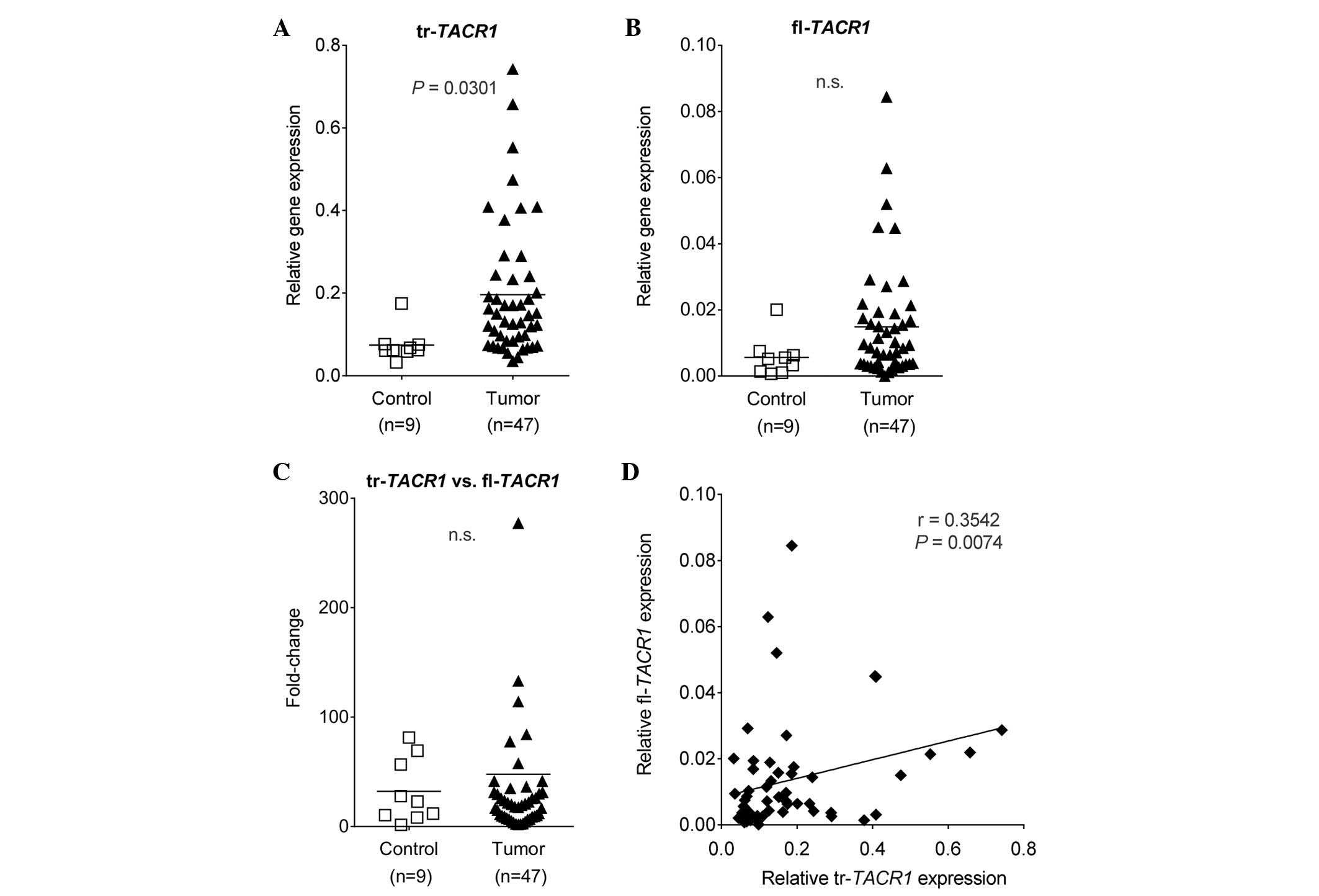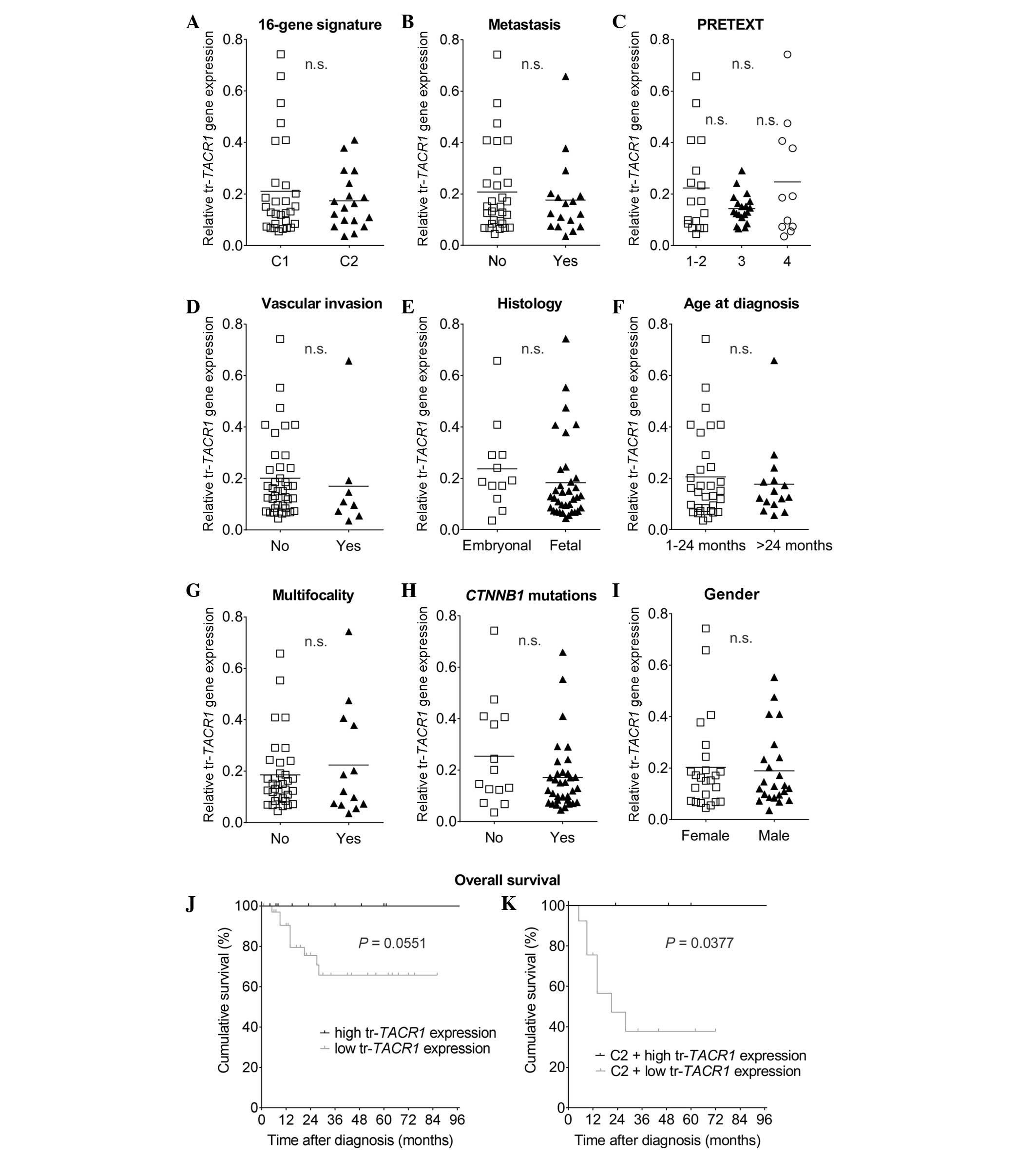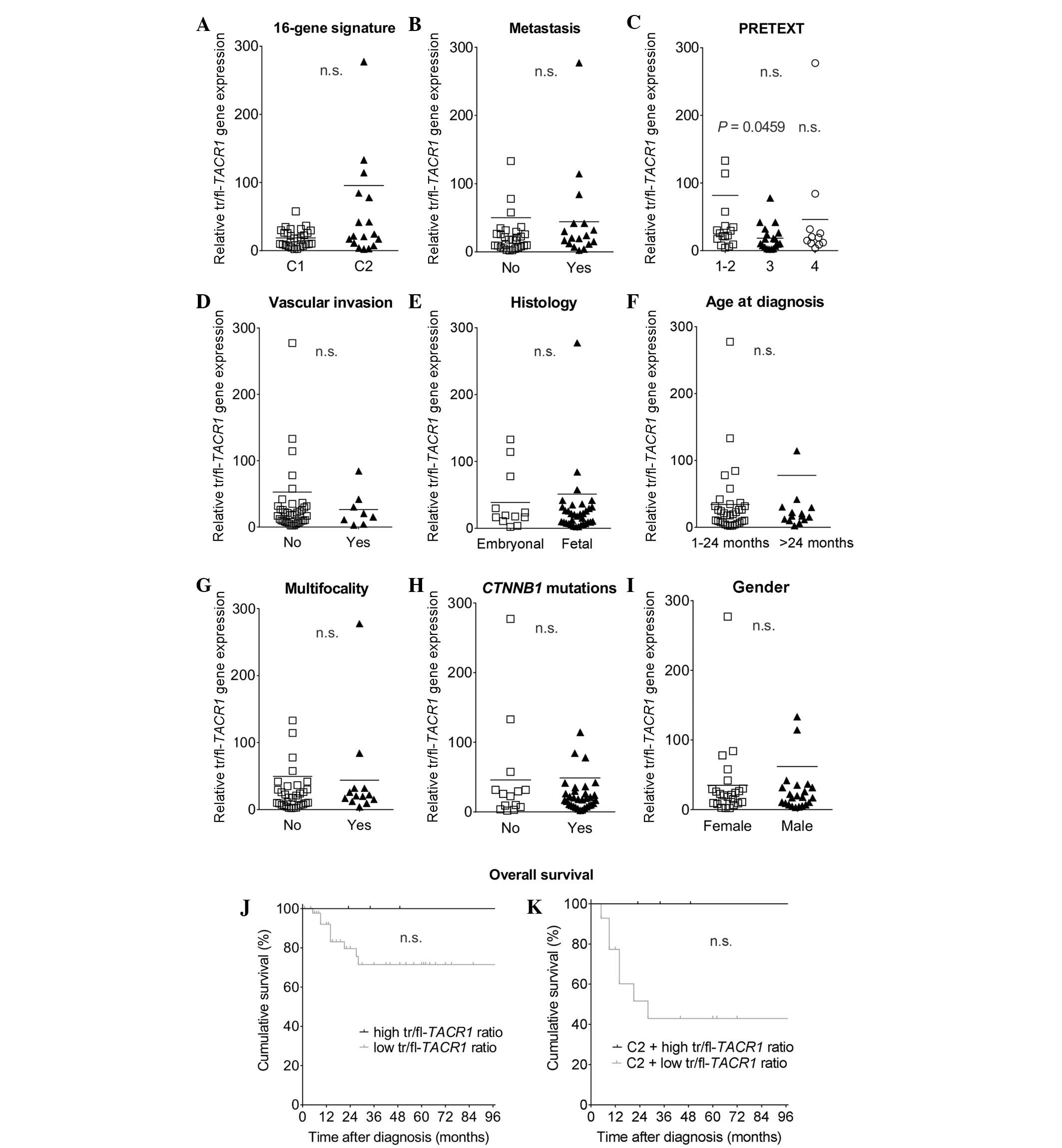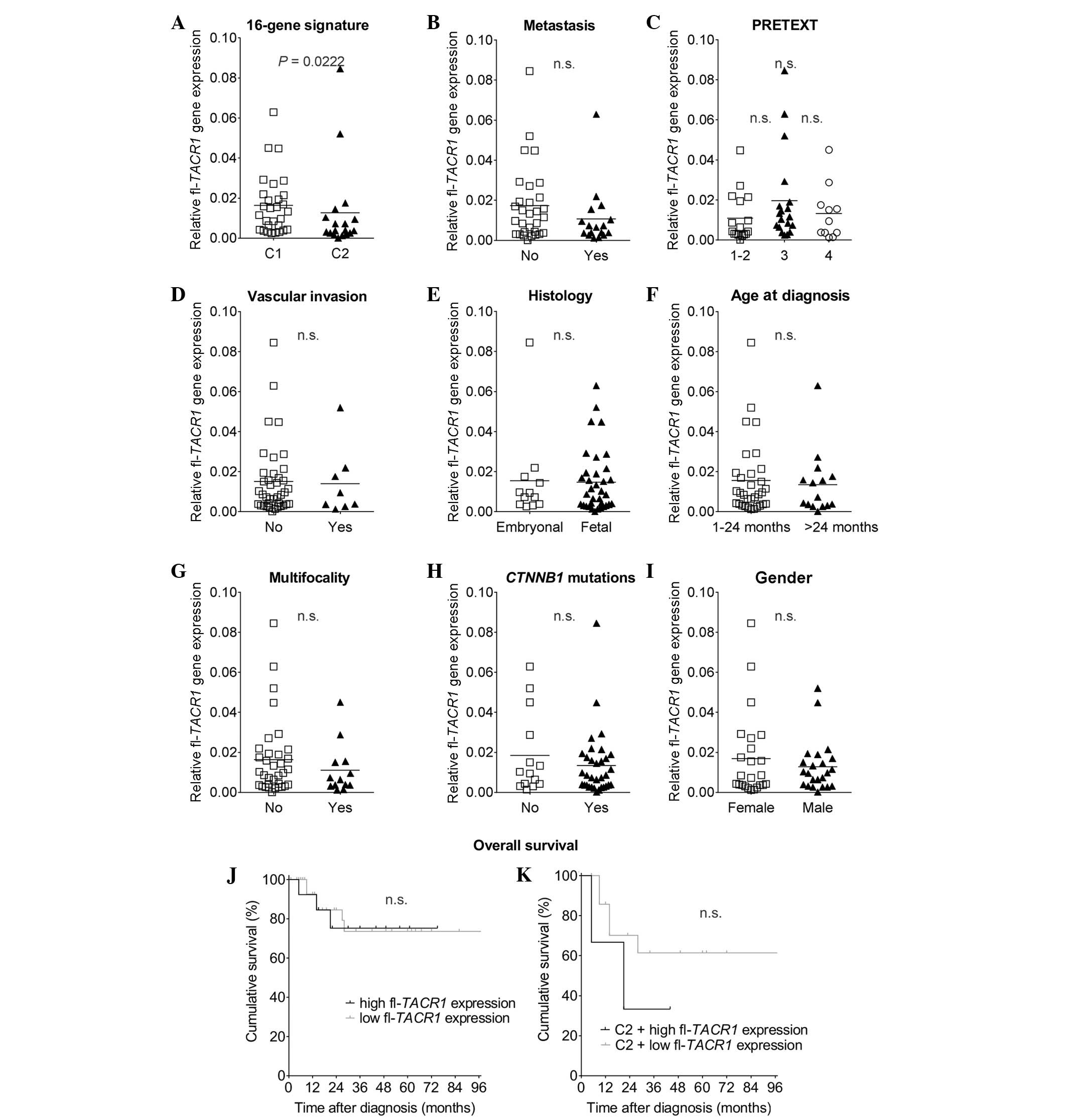|
1
|
von Schweinitz D: Hepatoblastoma: Recent
developments in research and treatment. Semin Pediatr Surg.
21:21–30. 2012. View Article : Google Scholar : PubMed/NCBI
|
|
2
|
Haeberle B and Schweinitz D: Treatment of
hepatoblastoma in the German cooperative pediatric liver tumor
studies. Front Biosci (Elite Ed). 4:493–498. 2012. View Article : Google Scholar : PubMed/NCBI
|
|
3
|
Warmann S, Hunger M, Teichmann B, et al:
The role of the MDR1 gene in the development of multidrug
resistance in human hepatoblastoma: Clinical course and in
vivo model. Cancer. 95:1795–1801. 2002. View Article : Google Scholar : PubMed/NCBI
|
|
4
|
Muñoz M, Rosso M and Coveñas R: The NK-1
receptor: A new target in cancer therapy. Curr Drug Targets.
12:909–921. 2011. View Article : Google Scholar : PubMed/NCBI
|
|
5
|
Palma C, Bigioni M, Irrissuto C, et al:
Anti-tumour activity of tachykinin NK1 receptor antagonists on
human glioma U373 MG xenograft. Br J Cancer. 82:480–487.
2000.PubMed/NCBI
|
|
6
|
Rosso M, Muñoz M and Berger M: The role of
neurokinin-1 receptor in the microenvironment of inflammation and
cancer. ScientificWorldJournal. 2012:3814342012. View Article : Google Scholar : PubMed/NCBI
|
|
7
|
Muñoz M, Rosso M and Coveñas R: A new
frontier in the treatment of cancer: NK-1 receptor antagonists.
Curr Med Chem. 17:504–516. 2010. View Article : Google Scholar : PubMed/NCBI
|
|
8
|
Berger M, Neth O, Ilmer M, et al:
Hepatoblastoma cells express truncated neurokinin-1 receptor and
can be growth inhibited by aprepitant in vitro and in
vivo. J Hepatol. 60:985–994. 2014. View Article : Google Scholar : PubMed/NCBI
|
|
9
|
Muñoz M, Pérez A, Rosso M, Zamarriego C
and Rosso R: Antitumoral action of the neurokinin-1 receptor
antagonist L-733 060 on human melanoma cell lines. Melanoma Res.
14:183–188. 2004. View Article : Google Scholar : PubMed/NCBI
|
|
10
|
Mayordomo C, García-Recio S, Ametller E,
et al: Targeting of substance P induces cancer cell death and
decreases the steady state of EGFR and Her2. J Cell Physiol.
227:1358–1366. 2012. View Article : Google Scholar : PubMed/NCBI
|
|
11
|
Muñoz M, Berger M, Rosso M, et al:
Antitumor activity of neurokinin-1 receptor antagonists in MG-63
human osteosarcoma xenografts. Int J Oncol. 44:137–146.
2014.PubMed/NCBI
|
|
12
|
Kramer MS, Cutler N, Feighner J, et al:
Distinct mechanism for antidepressant activity by blockade of
central substance P receptors. Science. 281:1640–1645. 1998.
View Article : Google Scholar : PubMed/NCBI
|
|
13
|
Gillespie E, Leeman SE, Watts LA, et al:
Truncated neurokinin-1 receptor is increased in colonic epithelial
cells from patients with colitis-associated cancer. Proc Natl Acad
Sci USA. 108:17420–17425. 2011. View Article : Google Scholar : PubMed/NCBI
|
|
14
|
Ramkissoon SH, Patel PS, Taborga M and
Rameshwar P: Nuclear factor-kappaB is central to the expression of
truncated neurokinin-1 receptor in breast cancer: Implication for
breast cancer cell quiescence within bone marrow stroma. Cancer
Res. 67:1653–1659. 2007. View Article : Google Scholar : PubMed/NCBI
|
|
15
|
Patel HJ, Ramkissoon SH, Patel PS and
Rameshwar P: Transformation of breast cells by truncated
neurokinin-1 receptor is secondary to activation by
preprotachykinin-A peptides. Proc Natl Acad Sci USA.
102:17436–17441. 2005. View Article : Google Scholar : PubMed/NCBI
|
|
16
|
Cairo S, Armengol C, De Reyniès A, et al:
Hepatic stem-like phenotype and interplay of Wnt/β-catenin and Myc
signaling in aggressive childhood liver cancer. Cancer Cell.
14:471–484. 2008. View Article : Google Scholar : PubMed/NCBI
|
|
17
|
Cairo S, Armengol C and Buendia MA:
Activation of Wnt and Myc signaling in hepatoblastoma. Front Biosci
(Elite Ed). 4:480–486. 2012. View
Article : Google Scholar : PubMed/NCBI
|
|
18
|
Garcia-Recio S, Fuster G,
Fernandez-Nogueira P, et al: Substance P autocrine signaling
contributes to persistent HER2 activation that drives malignant
progression and drug resistance in breast cancer. Cancer Res.
73:6424–6434. 2013. View Article : Google Scholar : PubMed/NCBI
|
|
19
|
Esteban F, Muñoz M, González-Moles MA and
Rosso M: A role for substance P in cancer promotion and
progression: A mechanism to counteract intracellular death signals
following oncogene activation or DNA damage. Cancer Metastasis Rev.
25:137–145. 2006. View Article : Google Scholar : PubMed/NCBI
|
|
20
|
Esteban F, Gonzalez-Moles MA, Castro D, et
al: Expression of substance P and neurokinin-1-receptor in
laryngeal cancer: Linking chronic inflammation to cancer promotion
and progression. Histopathology. 54:258–260. 2009. View Article : Google Scholar : PubMed/NCBI
|
|
21
|
Castro TA, Cohen MC and Rameshwar P: The
expression of neurokinin-1 and preprotachykinin-1 in breast cancer
cells depends on the relative degree of invasive and metastatic
potential. Clin Exp Metastasis. 22:621–628. 2005. View Article : Google Scholar : PubMed/NCBI
|
|
22
|
Misawa K, Kanazawa T, Misawa Y, et al:
Frequent promoter hypermethylation of tachykinin-1 and tachykinin
receptor type 1 is a potential biomarker for head and neck cancer.
J Cancer Res Clin Oncol. 139:879–889. 2013. View Article : Google Scholar : PubMed/NCBI
|
|
23
|
Pritchard J, Brown J, Shafford E, et al:
Cisplatin, doxorubicin, and delayed surgery for childhood
hepatoblastoma: A successful approach - results of the first
prospective study of the International Society of Pediatric
Oncology. J Clin Oncol. 18:3819–3828. 2000.PubMed/NCBI
|
|
24
|
Roebuck DJ, Aronson D, Clapuyt P, et al:
International Childrhood Liver Tumor Strategy Group: PRETEXT: A
revised staging system for primary malignant liver tumours of
childhood developed by the SIOPEL group. Pediatr Radiol.
37:123–132; quiz 249–150. 2007. View Article : Google Scholar : PubMed/NCBI
|
|
25
|
Eichenmüller M, Trippel F, Kreuder M, et
al: The genomic landscape of hepatoblastoma and their progenies
with HCC-like features. J Hepatol. 61:1312–1320. 2014. View Article : Google Scholar : PubMed/NCBI
|
|
26
|
Eichenmüller M, Gruner I, Hagl B, Häberle
B, Müller-Höcker J, von Schweinitz D and Kappler R: Blocking the
hedgehog pathway inhibits hepatoblastoma growth. Hepatology.
49:482–490. 2009. View Article : Google Scholar : PubMed/NCBI
|
|
27
|
Bigioni M, Benzo A, Irrissuto C, Maggi CA
and Goso C: Role of NK-1 and NK-2 tachykinin receptor antagonism on
the growth of human breast carcinoma cell line MDA-MB-231.
Anticancer Drugs. 16:1083–1089. 2005. View Article : Google Scholar : PubMed/NCBI
|
|
28
|
Pfaffl MW: A new mathematical model for
relative quantification in real-time RT-PCR. Nucleic Acids Res.
29:e452001. View Article : Google Scholar : PubMed/NCBI
|
|
29
|
Muñoz M and Coveñas R: Neurokinin-1
receptor: A new promising target in the treatment of cancer. Discov
Med. 10:305–313. 2010.PubMed/NCBI
|
|
30
|
Muñoz M and Rosso M: The NK-1 receptor
antagonist aprepitant as a broad spectrum antitumor drug. Invest
New Drugs. 28:187–193. 2010. View Article : Google Scholar : PubMed/NCBI
|
|
31
|
Nault JC and Villanueva A: Intratumor
molecular and phenotypic diversity in hepatocellular carcinoma.
Clin Cancer Res. 10:1786–1788. 2015. View Article : Google Scholar
|













